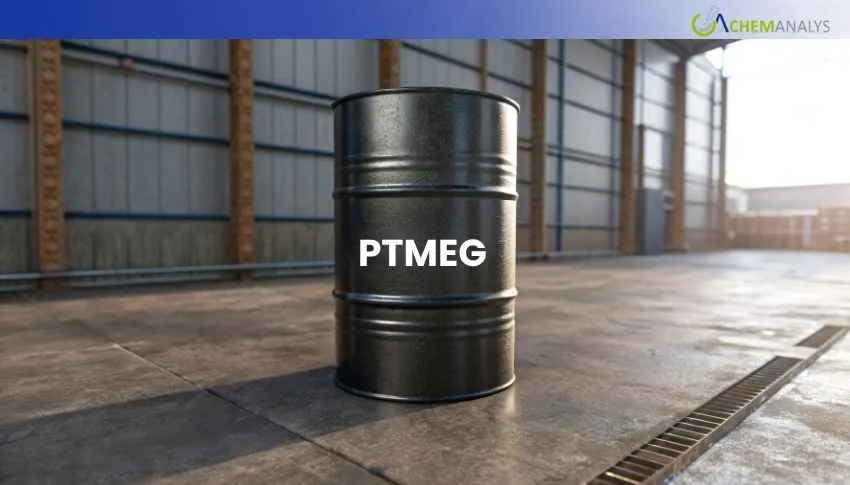Welcome To ChemAnalyst

During the first half of October 2025, the PTMEG (Polytetramethylene Ether Glycol) prices remained stable in Asia after declining in early October 2025. Weak cost support from the feedstock tetrahydrofuran (THF) and low demand in the downstream spandex market further kept prices stable.
In China, PTMEG prices remained stable following the long holidays. Supply in the domestic market remained adequate, with high inventories from September’s pre-holiday stocking pressuring prices. The producer maintained the normal operating rate as the demand is not showing much improvement.
Asian PTMEG market sentiment was further tempered by Huafeng Group's upcoming 240,000-ton/year capacity expansion in Chongqing Fuling—doubled from the original 120,000-ton plan—which may add Q4 price pressure if demand doesn't accelerate.
On the feedstock side, THF prices remained under pressure and declined by 2.1% in September due to high inventory and limited demand in the downstream, reducing the production cost of PTMEG and keeping the prices stable.
On the Demand side, PTMEG demand in the downstream spandex and textile remained low. The textile sector market faced notable declines, with September prices declined by 0.2% m-o-m and 2.4% from January-September 2025.
Downstream spandex production is declining m-o-m, reducing the PTMEG demand. Spandex production reached 89000 metric tons in September, which is down by 2.2% m-o-m with the capacity utilization rate at 77%. This decline reflects the seasonal softening in the downstream textile industry and ample inventories, despite total domestic spandex capacity exceeding 135 million tons annually (up 9% year-on-year), driven by expansions from Huafeng Chemical (32.5 million tons, plus 20 million tons under construction for 2026). Downstream companies focus on the immediate needs and avoid the bulk commitments.
In India, PTMEG demand in the downstream industries also remained limited, and textile exports are declining due to high tariff by the US, which has increased by 50% that has impacted the competitiveness and leading the low sales in the US market. As a result, around 85% exporters are facing a problem with high inventory buildup due to low sales in the US market. The US market is important for India as it accounts $10.8 billion or 30% of all the textile and apparel export from India.
India's textile and apparel exports plummeted by 10.34% to $2.621 billion in September 2025, a decline from $2.923 billion in September 2024, largely due to 50% reciprocal tariffs.
Therefore, Indian exporters are focusing on the European and other market, supported by the ongoing trade negotiation between India and Europe, which may mitigate the impact of tariff and open new market for the Indian exporters.
As per the Chemanalyst data, PTMEG prices are likely to remain stable or low in the 2nd half of October due to Diwali holidays in major market like India and rapidly capacity expansion in the PTMEG market, particularly in China.
We use cookies to deliver the best possible experience on our website. To learn more, visit our Privacy Policy. By continuing to use this site or by closing this box, you consent to our use of cookies. More info.
